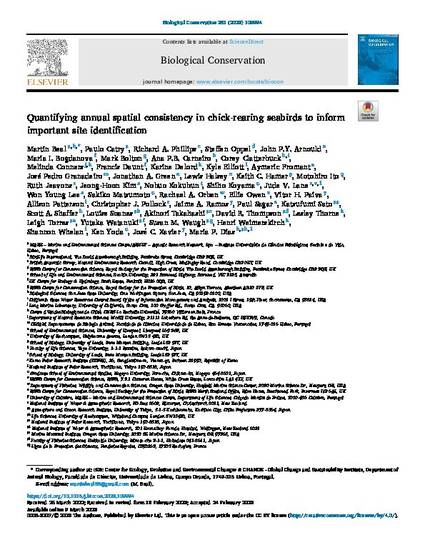
Animal tracking has afforded insights into patterns of space use in numerous species and thereby informed area-based conservation planning. A crucial consideration when estimating spatial distributions from tracking data is whether the sample of tracked animals is representative of the wider population. However, it may also be important to track animals in multiple years to capture changes in distribution in response to varying environmental conditions. Using GPS-tracking data from 23 seabird species, we assessed the importance of multi-year sampling for identifying important sites for conservation during the chick-rearing period, when seabirds are most spatially constrained. We found a high degree of spatial overlap among distributions from different years in most species. Multi-year sampling often captured a significantly higher portion of reference distributions (based on all data for a population) than sampling in a single year. However, we estimated that data from a single year would on average miss only 5 % less of the full distribution of a population compared to equal-sized samples collected across three years (min: −0.3 %, max: 17.7 %, n = 23). Our results suggest a key consideration for identifying important sites from tracking data is whether enough individuals were tracked to provide a representative estimate of the population distribution during the sampling period, rather than that tracking necessarily take place in multiple years. By providing an unprecedented multi-species perspective on annual spatial consistency, this work has relevance for the application of tracking data to informing the conservation of seabirds.
- Animal tracking,
- Area-based conservation,
- Biotelemetry,
- Key biodiversity areas,
- Marine spatial planning,
- Protected areas,
- Sampling effort,
- Spatial consistency
Available at: http://works.bepress.com/scott_shaffer/89/

This article has been corrected. Documentation of that correction can be found here: https://doi.org/10.1016/j.biocon.2023.110025